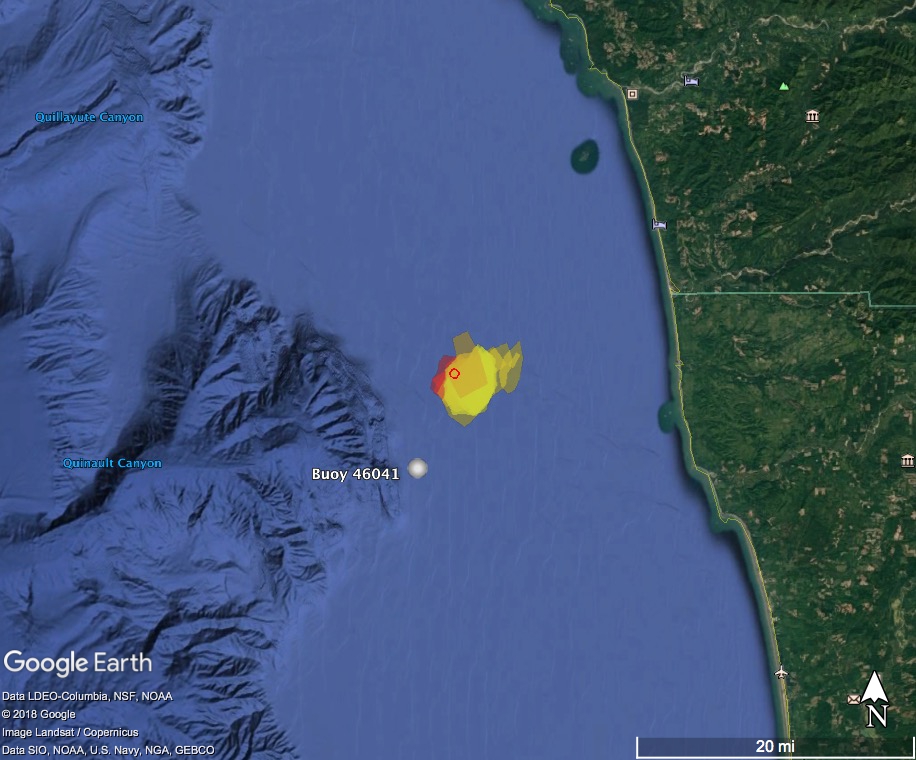
Date:
Today, I embark on a fascinating journey aboard the oceanographic research vessel E/V Nautilus in search of the first meteorite ever recovered from the bottom of the ocean.
On March 8, 2018, a large bolide meteorite exploded about 25 km off the Oregon/Washington coast. Bolide meteorites are very bright fireballs that often explode before they hit the ground, creating a meteorite fall, a shower of smaller meteorites covering a certain area. According to NASA scientists, this particular meteorite was roughly the size of a minivan, breaking up into smaller pieces as it hit the ocean.
While this could be characterized as a “needle in a haystack” search, the guest scientist on this oceanographic expedition, Dr. Marc Fries, known for having what might be the coolest job at NASA as their ‘Cosmic Dust Curator,’ has used a variety of tools to narrow the search grid to only one square kilometer.
In an interview with Q13 FOX News in Seattle, Fries said the meteor appeared to travel northwest over Washington and land about 14 miles off the coast. Scientists tracked the bolide with seismographs, weather satellites and other NASA equipment; some registering readings as far away as Manitoba, Canada.
Dr. Fries’ analysis indicates this fall contains approximately 2 tons of meteorites, and is the largest meteorite fall he has seen in 21 years’ worth of radar data. His analysis included data from the NOAA NEXRAD radar system, terrestrial and ocean bottom seismometers, and resident accounts and video recordings of the meteorites. The meteorite fall was also detected on a local NDBC buoy, which indicated a significant shift in the direction of the maximum wave energy during the time of the fall.
The E/V Nautilus, the research vessel owned by on profit ocean exploration group the Ocean Exploration Trust and run by ocean explorer Dr. Robert Ballard, will work with NASA to conduct sea floor mapping in the search area, looking for depressions in the sea floor where the meteorites would have landed. The fragments are small enough that it’s unlikely they will be visible in the multibeam sonar mapping mounted to the underside of the ship.
If we discover evidence of a meteorite fall, we will launch an unmanned ROV (remotely operated vehicle) with live cameras to search the seafloor for the actual fragments, and hopefully, recover them using a magnet attached to the ROV, or by picking them up off the seafloor using remote manipulator arms attached to the vehicle.
You can follow this expedition LIVE at www.nautiluslive.org.


